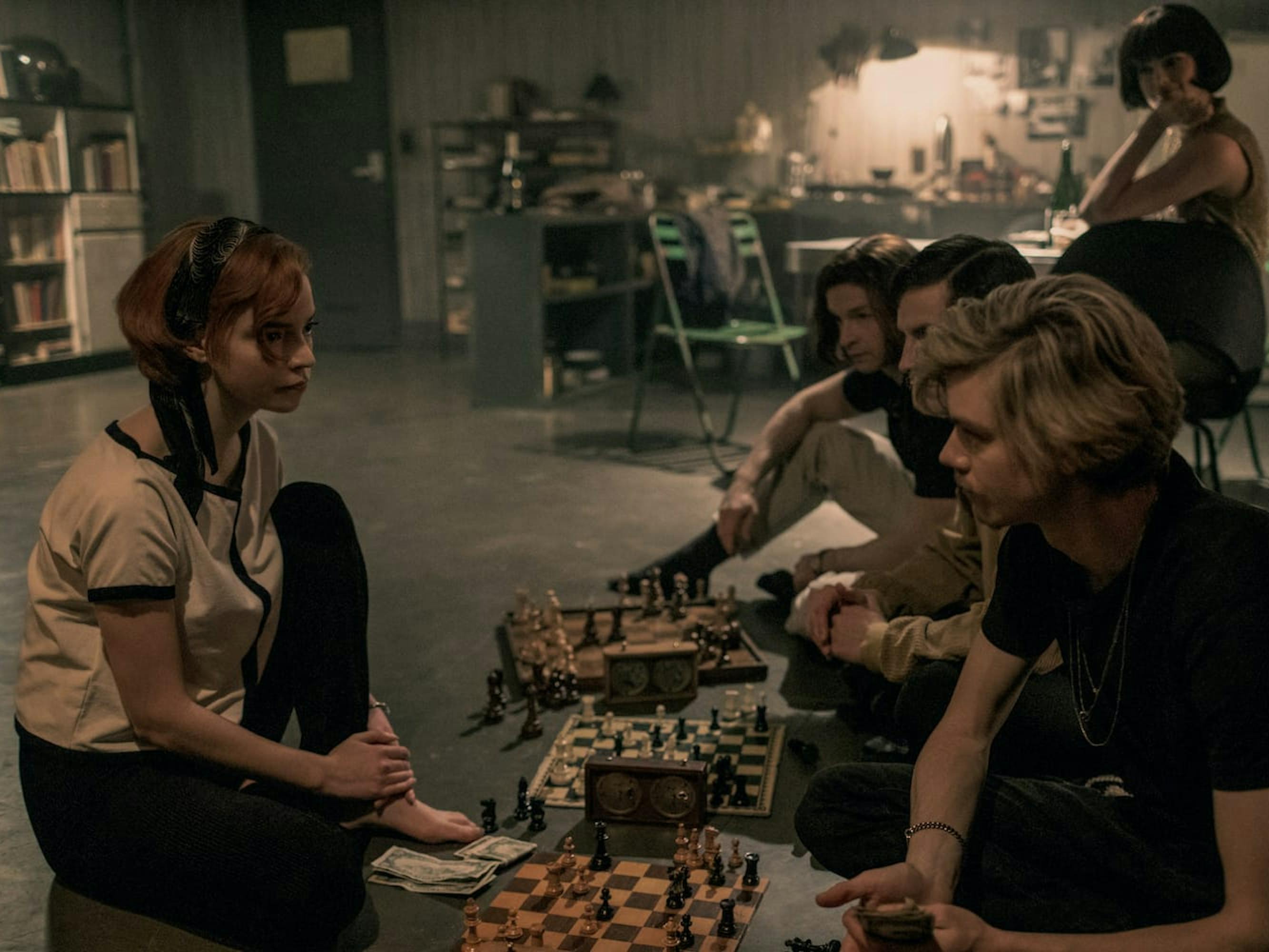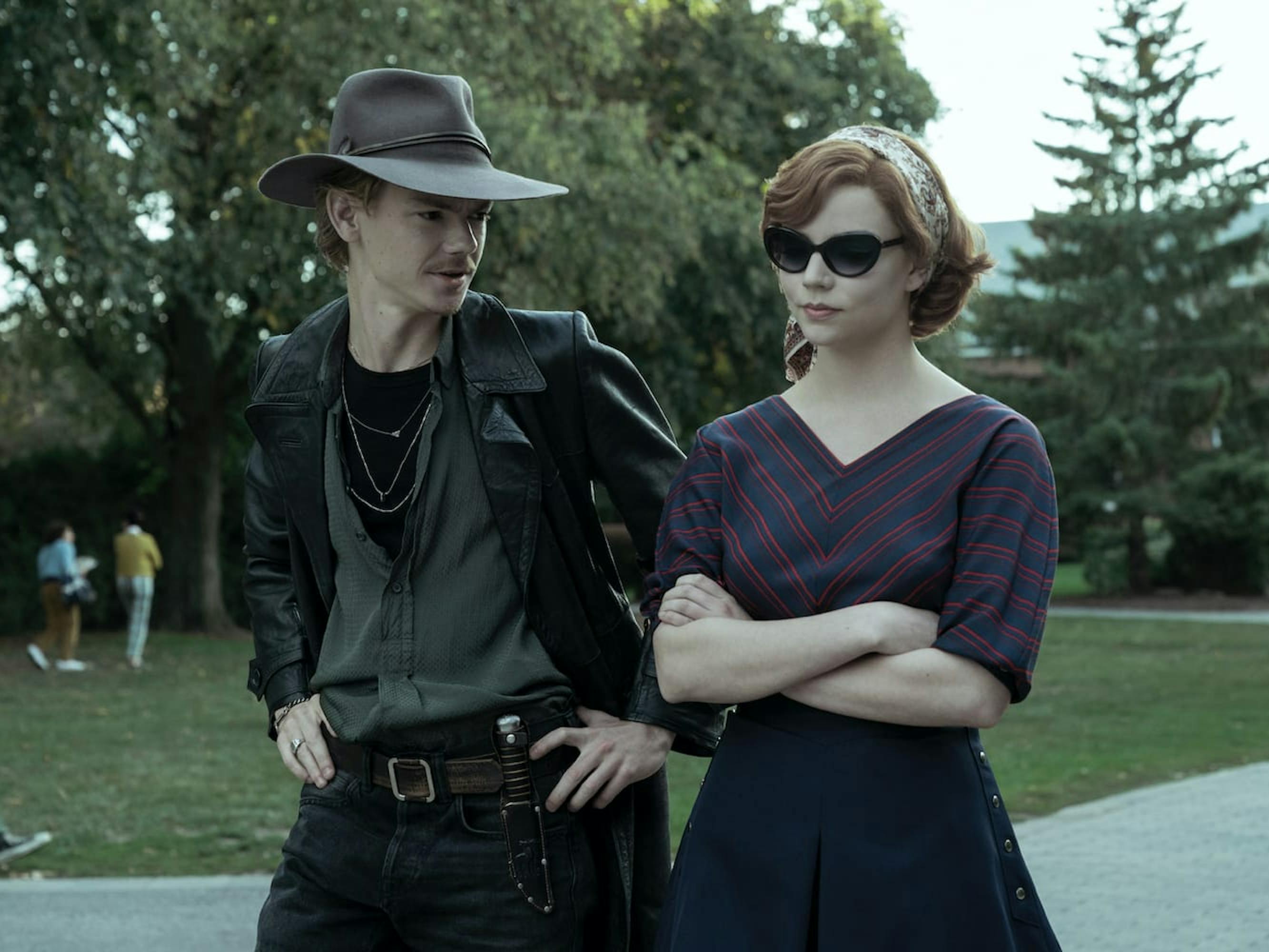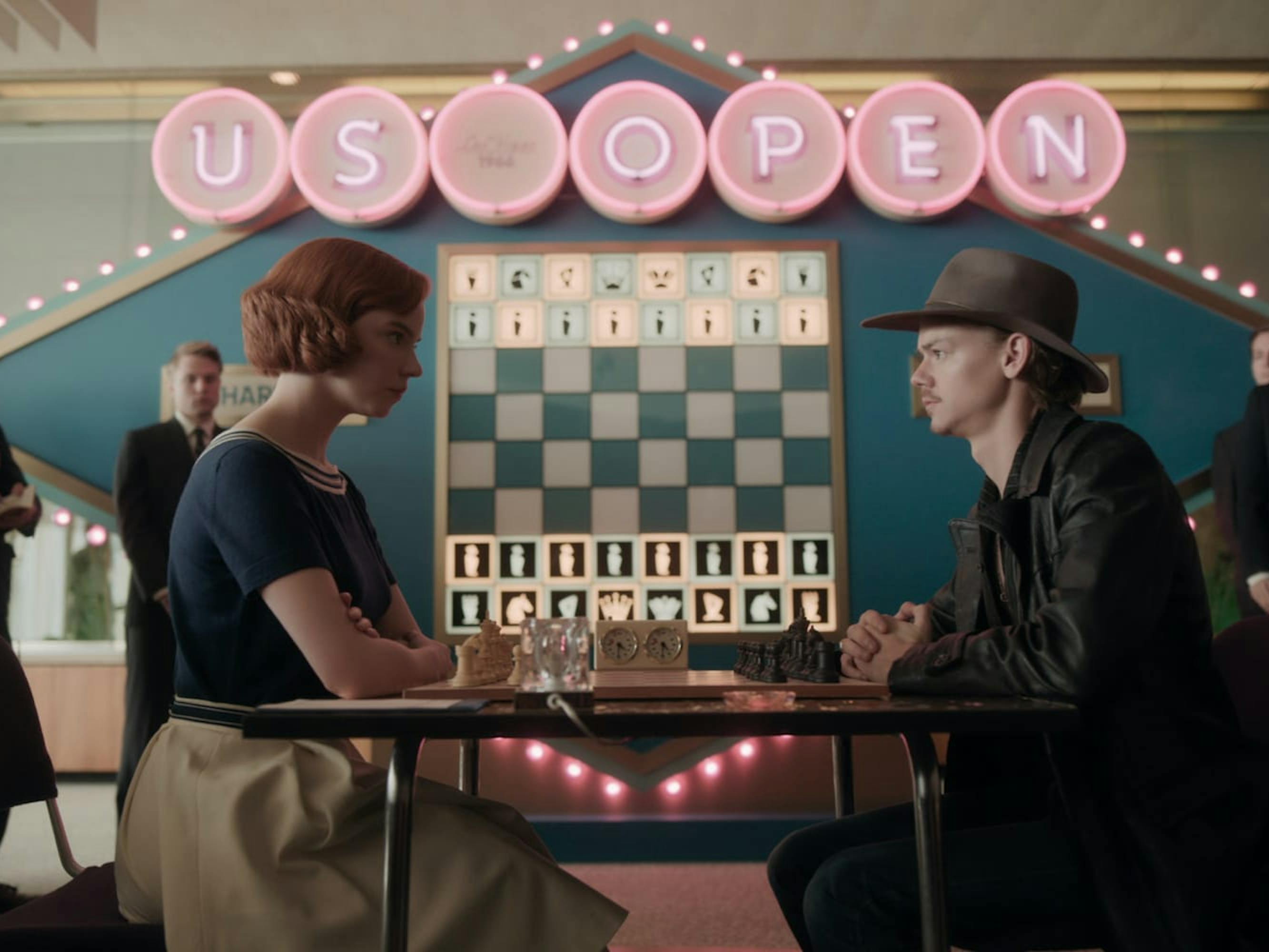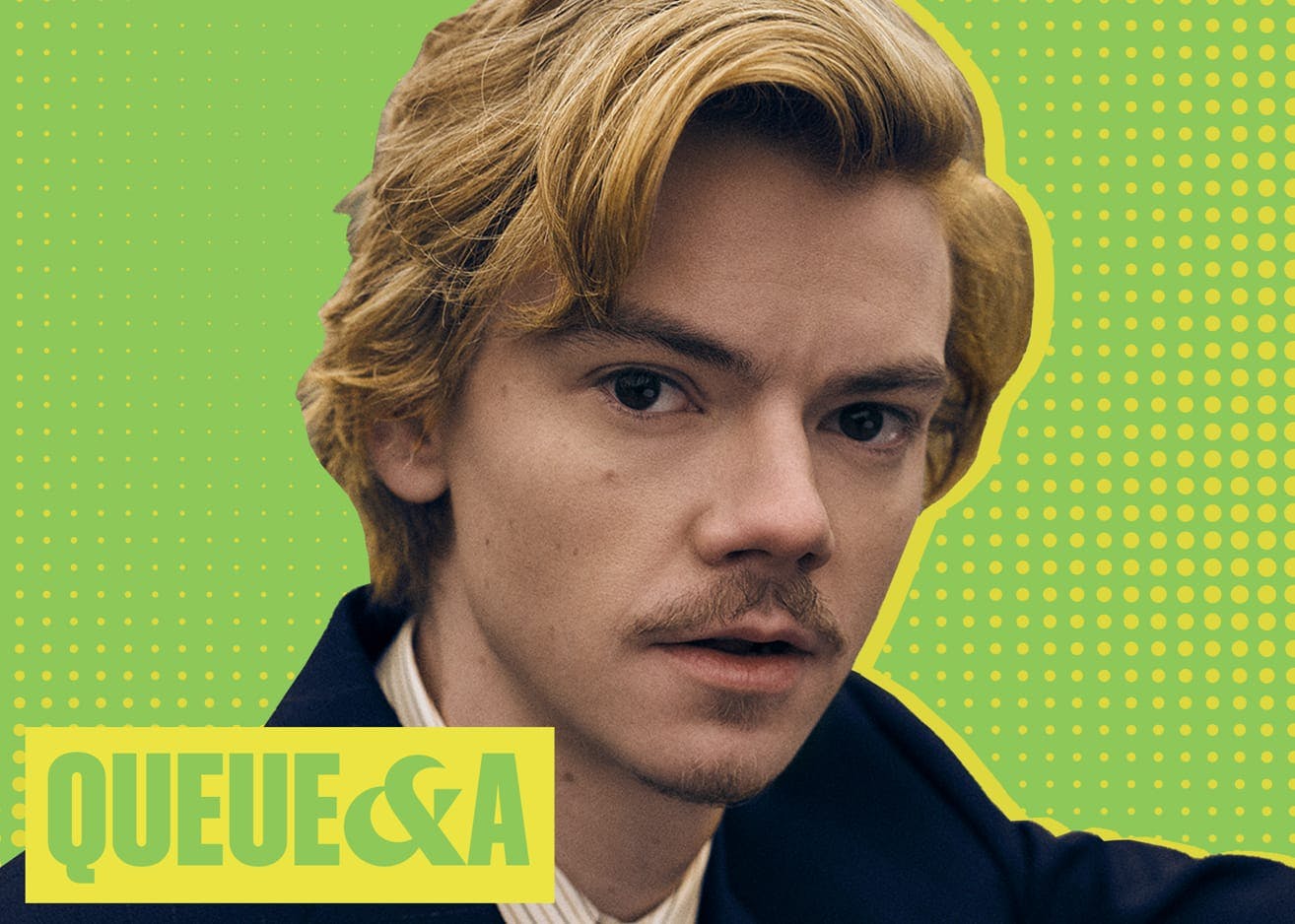Netflix stars answer Queue’s questions about creativity and craft.
The Queen’s Gambit star Thomas Brodie-Sangster takes his turn answering Queue’s Q’s.
Queue: What inspired you to pursue a career in acting?
Thomas Brodie-Sangster: My parents and my upbringing in general, I suppose. My mum’s a ballerina and my dad is a musician and an actor. They met on a children’s play, I think, up in Scotland. They both fell into acting. I always grew up with art happening around the house. I saw my mum and dad just having fun, and it looked like something that I wanted to get involved with as well. My mom took a photo of me and we sent it off to their agents at the time. It just snowballed from there, really. It was kind of accidental. I was 10, so I wasn’t thinking about careers or anything. I just wanted to have fun.
What was your first role?
TBS: My first ever role was a small BBC television film called Station Jim.
Were there any performances that inspired you when you were preparing for the role of Benny in The Queen’s Gambit?
TBS: Not really. I’d done Godless with Scott Frank for Netflix; I think he really liked what I did there and what I brought to it. We wanted to make a chess-playing, 1960s cowboy, really. So, I suppose I was inspired by myself in a previous part.

Beth Harmon (Anya Taylor-Joy) and Benny Watts (Thomas Brodie-Sangster)
Do you feel similar at all to Benny?
TBS: There’s similarities in every role you play; you have to find a way of sympathizing with every character. I do relate to Benny, in certain manners. He’s also very different from me, but I like him a lot. I’m not entirely sure on what level we relate, but I certainly sympathize with him.
When you were on set, were there any songs you listened to that helped you get into character?
TBS: I compiled a little playlist. All the songs of the period. The main one was “Can’t Seem to Make You Mine” by The Seeds. I remember that one coming up a lot. “Bonnie and Clyde” by Brigitte Bardot and Serge Gainsbourg. Lots of 60s stuff, obviously. A bit of Rolling Stones, “Gimme Shelter.” A bit of Hendrix. Stuff that’s a little bit dirty, a little bit sleazy, in an underground 1960s New York vibe, which is Benny.
Describe working with your Queen’s Gambit co-stars. What was the experience of working with Anya?
TBS: I think everyone was cast perfectly. I think they got the casting spot on. When you do that, it just makes the whole experience a lot easier because everyone’s prepped and ready to go and is perfectly suited to their character. It’s just a lot easier. Even somewhat intimidating scenes are dealt with very, very well, and they’re not nearly as intimidating as they could be because everyone is on the ball, really. Also, when you see everyone in character for the first time in their hair and makeup, these crazy wigs and amazing costumes, it doesn’t take much imagination to just whisk you away into the environment that you’re trying to portray. I loved working with everyone on board.
Was there a specific scene that was most memorable to shoot?
TBS: I enjoyed the speed chess scenes, and I also enjoyed my set, my weird basement flat in New York. Particularly the speed chess in my apartment — I’m teaching Anya certain things: how to play and certain openings to take. I loved all those scenes, really. That was great fun to play with Anya.

Benny Watts (Thomas Brodie-Sangster) and Beth Harmon (Anya Taylor-Joy)
Do you have a favorite chess move?
TBS: No. I’m still not very good at chess. I just memorize lots of moves. Checkmate is my favorite move.
Benny has such an amazing look. Was there a favorite item from your costume? Did you get to keep anything?
TBS: I thought about keeping some stuff, but I didn’t in the end. I wanted to pinch his knife and some of his shirts at the end. I think the reason I didn’t is because, actually, it worked as a whole. You take one of those pieces out and it’s still a cool shirt, but it only works as a whole image. I wouldn’t say there’s necessarily a particular favorite. I had a green halfway button-up shirt. I did love that. The fabric fell really nicely, and it was very comfortable to wear.
What is the last thing you watched on Netflix?
TBS: Malcolm & Marie was the last thing I watched, and I thought that was great. I thought that was a real hark back to an almost-Hitchcock style, like Rope. Seeing 35 millimeter film being used again and black and white was really great. The acting was fantastic in it. I thought it was just a really well-written argument — they have lots of arguments that you can relate to. The ebb and flow, the ups and the downs. It’s amazing how wonderfully watchable something where nothing really happens is, just because it’s so human.

Beth Harmon (Anya Taylor-Joy) and Benny Watts (Thomas Brodie-Sangster)
Photography by Ken Woroner
